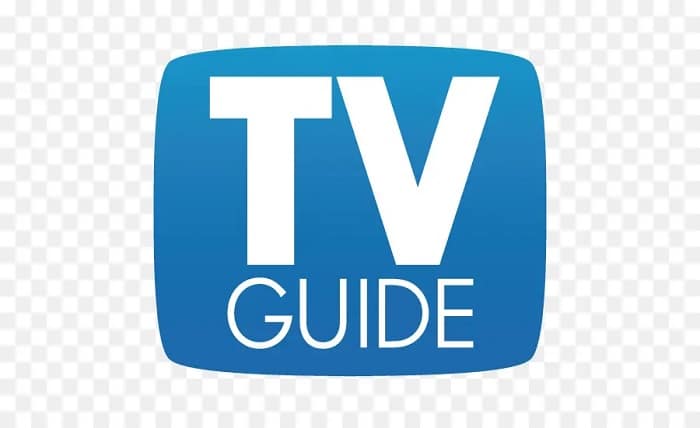Navigating the Modern TV Landscape: A Comprehensive TV Guide

In the ever-expanding universe of television, a reliable TV guide remains an essential tool for viewers navigating through countless channels and platforms. With the advent of streaming services alongside traditional broadcasting, the role of the TV guide has evolved significantly. Initially, TV guides were primarily printed booklets or sections in newspapers that listed scheduled broadcasts on various channels. Today, digital TV guides offer real-time updates and interactive features that help users track their favorite shows, discover new content, and even record upcoming episodes. This adaptability makes the modern TV guide an indispensable resource for any television enthusiast.
Evolution of the TV Guide
The transformation of the TV guide from a simple printed schedule to a dynamic digital tool mirrors the overall changes in the media landscape. Initially, TV guides provided a static list of what and when to watch on television. However, as technology advanced, so did the TV guide. The introduction of the internet and smart devices led to the creation of online TV guides that offer more than just program schedules. These platforms provide detailed descriptions, cast information, episode previews, and viewer ratings. Furthermore, the integration of customizable features allows users to tailor their viewing experience, making modern TV guides a far cry from their paper ancestors.
Importance of TV Guide in Daily Viewing
A TV guide is crucial for daily viewing as it helps users efficiently plan their TV watching schedule without missing out on their favorite shows and movies. In today’s fast-paced world, where viewers are bombarded with content from multiple sources, a TV guide simplifies decision-making. Whether it’s setting reminders for live broadcasts or scheduling recordings on a DVR, the TV guide has adapted to serve the needs of a diverse viewing audience. Additionally, TV guides now incorporate recommendations based on viewing habits, enhancing the overall user experience by suggesting shows and movies you might enjoy based on your preferences.
TV Guide and Streaming Services
As streaming platforms like Netflix, Hulu, and Amazon Prime Video dominate the TV landscape, the TV guide has had to incorporate these services into its listings. Unlike traditional broadcasting schedules, streaming services offer on-demand content, which presents a unique challenge for TV guide integration. Modern TV guides address this by including information on available streaming content, along with traditional channel listings. This comprehensive approach ensures that viewers can access all available viewing options in one place, making it easier to manage their subscriptions and viewing preferences across various platforms.
TV Guide Features: What to Look For
When choosing a TV guide, there are several key features to consider that enhance usability and ensure you get the most out of your television viewing experience. Firstly, a good TV guide should offer an intuitive interface that makes navigation simple. Search functions, filters by genre or channel, and customizable alerts for favorite shows are must-have features. Additionally, many TV guides now offer integration with digital recording tools, allowing viewers to schedule recordings directly from the guide. The availability of mobile apps is also important, as it enables users to access the guide on-the-go from smartphones or tablets.
How to Use a TV Guide Effectively
Using a TV guide effectively involves more than just checking when a show airs. It’s about maximizing the potential of the guide to enhance your viewing experience. Regularly updating your preferences and utilizing features like watchlists can help you keep track of your favorite shows and discover new content. Additionally, taking advantage of recording features ensures that you never miss an episode. For families, setting up profiles with individual preferences can help cater to different tastes, while parental control settings available in many TV guides can help monitor and restrict content viewed by children.
TV Guide and the Future of Television
The future of television is likely to see further integration between TV guides and content platforms, with advancements in AI and machine learning enhancing how content is recommended and accessed. The TV guide could evolve into a more personalized service, predicting and recording shows for you before you even express an interest. Moreover, with the rise of virtual and augmented reality technologies, future TV guides might offer more immersive ways to explore and interact with content, possibly providing viewers with a 3D visual space where they can engage with their favorite shows in a more dynamic way.
Challenges Facing Modern TV Guides
Despite their utility, modern TV guides face significant challenges, particularly from the increasing number of content sources and the varying availability of shows and movies across different regions and platforms. Keeping the guide up-to-date with live data from a myriad of sources requires sophisticated backend technology and constant updates. Additionally, as privacy becomes a bigger concern, TV guides must also navigate the balance between personalization and user data security, ensuring that user preferences are used responsibly and transparently.
Comparing Popular TV Guides
In the market today, there are several popular TV guides that cater to different needs and preferences. Some focus on providing comprehensive listings with a wide range of channels, while others might specialize in a particular type of content, such as sports or movies. Reviewing these options can be beneficial, as it helps users choose a guide that best fits their viewing habits. Features such as interface design, additional content like reviews and interviews, and the extent of integration with streaming services can all influence which TV guide is most suitable for a particular user.
Conclusion
The modern TV guide is a vital tool for anyone looking to navigate the complex and ever-expanding world of television. By offering detailed schedules, customizable features, and integration with both traditional and streaming platforms, TV guides play a crucial role in enhancing the viewing experience. As television continues to evolve, so will the functionalities and capabilities of TV guides, ensuring that they remain relevant and valuable to viewers around the world.
FAQs:
1. Why is a TV guide important in today’s digital age?
Even with the proliferation of on-demand content, a TV guide helps viewers manage their viewing schedules effectively, ensuring they don’t miss new content.
2. How has the TV guide adapted to include streaming services?
Modern TV guides now include streaming content in their listings, providing a comprehensive view of all available viewing options.
3. What features should I look for in a TV guide?
Key features include an intuitive interface, search and filter options, recording capabilities, and mobile access.
4. How can I use a TV guide effectively?
Maximize the use of customization features, set reminders for your favorite shows, and use recording options to never miss an episode.
5. What challenges do modern TV guides face?
Challenges include keeping up with numerous content sources, ensuring up-to-date listings, and maintaining user privacy.




